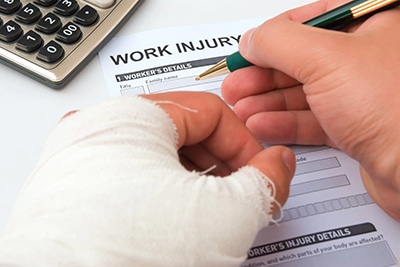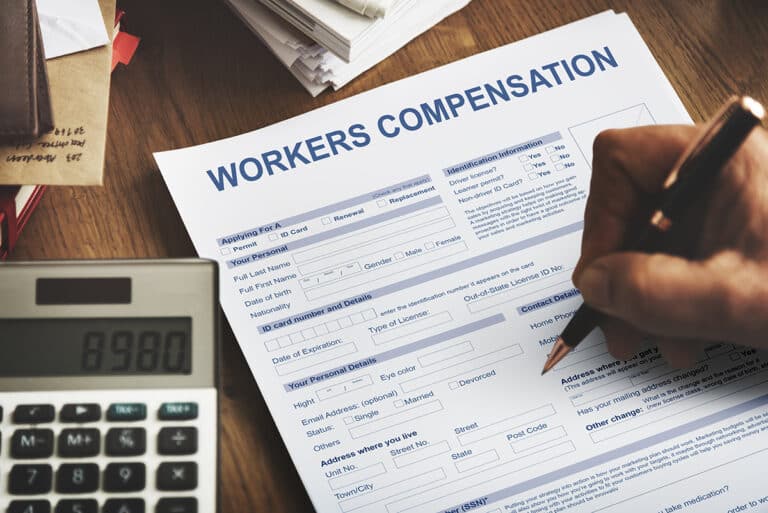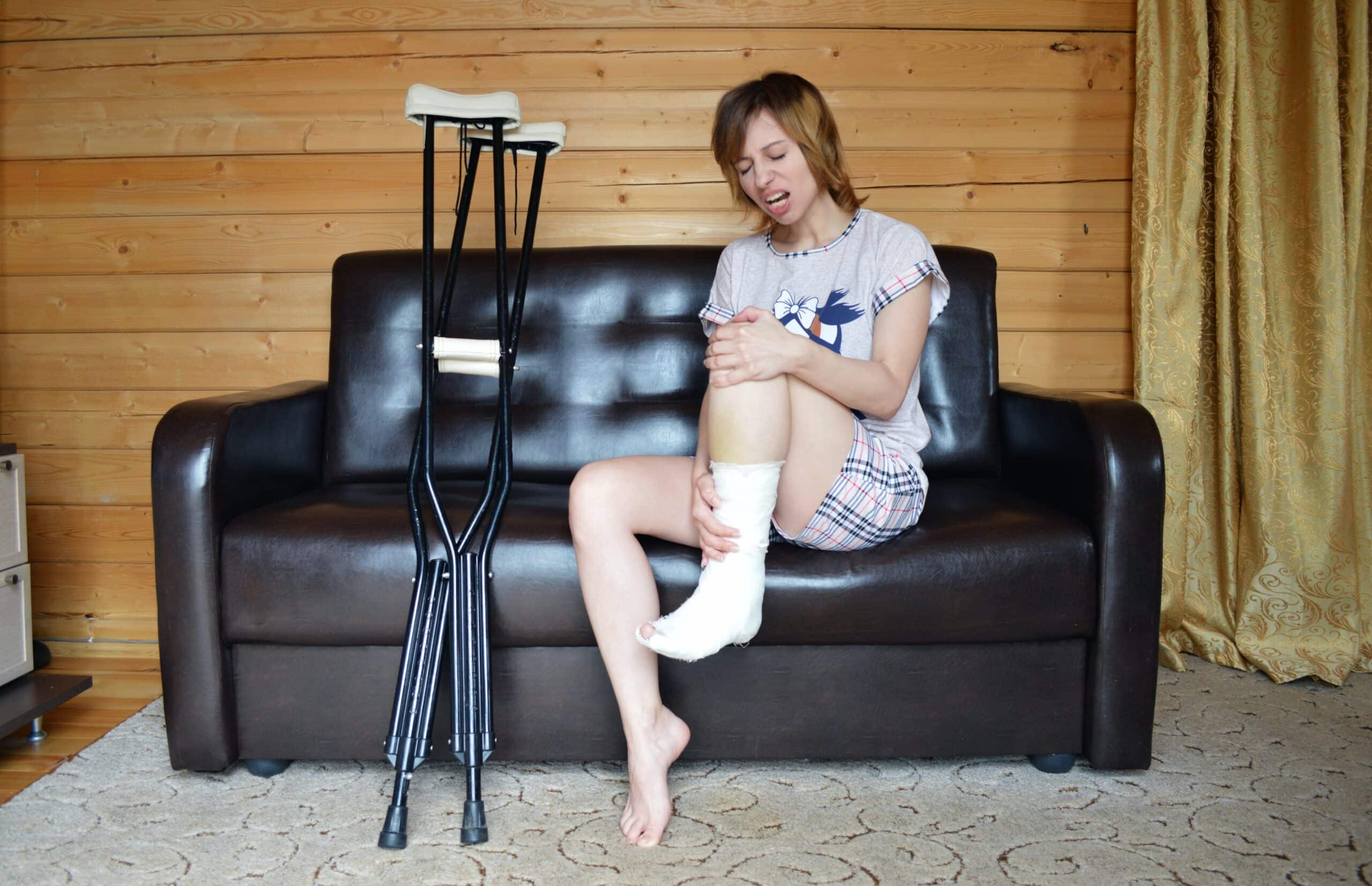How to File a Workers Comp Claim: A Step-by-Step Guide
Have you ever wondered how to file a workers’ comp claim and what steps are involved in the process? Most people aren’t thinking about how they’re going to handle work related injuries until after they’re hurt, but when a workplace accident happens, you need to understand the ins and outs of workers’ compensation to ensure you receive the benefits you deserve.
In this comprehensive guide by The Ultimate Law Firm, we will walk you through the entire workers’ comp claims process, from understanding the purpose of these claims to how to file a claim, and how a workers compensation lawyer can help you to get the maximum settlement possible for your claim.
Understanding Workers Comp Claims
Workers’ compensation claims exist for a vital reason: to provide injured or ill employees with medical treatment, a portion of lost wages during recuperation, and permanent disability benefits. When an employee sustains a work-related injury or illness, their employer’s insurance company is responsible for covering these benefits, allowing you to receive workers compensation benefits.
Initiating the claims process requires the injured worker to report the incident to their employer promptly. The employer, in turn, has the responsibility to file a workers’ compensation claim with their insurance carrier. Failing to have workers’ comp insurance can put businesses in a precarious position, as they would be liable for covering medical expenses and other associated costs for the injured employee.
Preparing to File a Workers’ Comp Claim
Adequate preparation is imperative before undertaking the workers’ compensation claims process. In the upcoming subsections, we will discuss the importance of seeking immediate medical attention, documenting your injury or illness, and being well-versed in your state’s specific requirements.
Seeking Immediate Medical Attention
Immediate medical attention should be sought, regardless of the severity of your injury. In case of an emergency, you may visit the nearest emergency room or urgent care facility. For non-emergency treatment, adhere to your state’s regulations for obtaining medical care from a medical provider.
There are two primary reasons why prompt medical attention is critical: for accurate documentation and to ensure proper treatment. The documentation provided by medical professionals is essential to establish a clear timeline and demonstrate the link between the injury or illness and the workplace. Proper diagnosis and treatment can significantly impact the success of your workers’ comp claim.
Documenting the Injury or Illness
Maintaining detailed records of your injury or illness is vital for a workers’ comp claim. Evidence required to support your claim includes:
- Medical records
- Lab tests
- Expert opinions
- Witness testimony
- Employment records
- Photographs of the accident scene, if applicable.
To take effective photographs of injuries, follow these steps:
- Start by capturing an overall image of the affected area.
- Take pictures from different angles.
- Include your whole body in some shots to provide context.
- Use timestamps to record the date and time of each photo.
- Continue taking photos throughout the healing process to document progress. Remember, do not share these photographs on social media or any online forums during the case.
Understanding State Requirements
Each state has distinct workers’ compensation laws and regulations. It’s advisable to visit your state’s workers compensation board website or directly contact them for compliance. By doing so, you can obtain information, forms, and assistance for filing your workers’ comp claim.
Be aware of the time limits for filing a workers’ compensation claim in your state. These timeframes vary across states, so it’s crucial to research your state’s regulations to avoid missing any deadlines.
Initiating the Claims Process
Upon preparing for your claim, you should proceed to start the claims process. Notify your employer of your injury and obtain the necessary claim form.
In the following subsections, we will discuss the importance of notifying your employer and acquiring the workers’ comp claim form.
Notifying Your Employer
Notifying your employer about your work-related injury or illness marks a vital initial step in the claims process. When notifying your employer, provide the date and time of the incident, the type of injury or illness, and the circumstances under which it occurred. Submit this notification in writing and include the date and your contact information.
Timely notification is crucial to avoid potential delays or doubts and ensure the success of your claim. Failing to notify your employer within the stipulated timeframe (usually 30 days) may result in the forfeiture of your workers’ compensation benefits.
Acquiring the Workers’ Comp Claim Form
Your employer should be notified promptly about your injury or illness. They should provide you with a claim form within one working day. If they fail to do so, you can download the form from the Forms page of your state’s Division of Workers’ Compensation website or contact the Information and Assistance Unit.
The claim form typically requires the following information:
- Your name
- Your address
- Your employer’s name and address
- Details of the injury or occupational disease
- Any supporting medical reports or witness statements
Be thorough and accurate when providing this information to ensure a smooth claims process.
Completing and Submitting the Claim Form
Once you have the claim form, fill it out accurately and hand it over to your employer for the next steps.
In the following subsections, we will guide you through filling out the employee section and submitting the form to your employer.
Filling Out the Employee Section
When filling out the employee section of the claim form, include the following information:
- Full name
- Employee ID (if applicable)
- Home address
- City
- State
- Zip code
- Gender
- Date of birth
- Work telephone number
- Home/cell phone number
Be as thorough as possible when providing an account of your injury. Once you’ve completed the form, sign and date it.
Taking the time to carefully review the information on the claim form ensures its accuracy and completeness. This attention to detail will help avoid any potential delays or issues with your workers’ comp claim.
Submitting the Form to Your Employer
After signing the workers’ comp claim form, submit it to your employer, either in person or via certified mail. Certified mail offers a reliable and secure method for sending important documents, providing:
- Proof of mailing
- Recipient signature
- Package tracking
- Insurance
Your employer should provide a dated copy of the completed form. If they fail to do so, request a copy and keep it for your records. This documentation is crucial to ensure a smooth claims process and protect your rights as an injured worker.
Navigating the Claims Review Process
While awaiting a decision on your claim, understanding the claims review process is essential.
In the upcoming subsections, we will discuss the insurance company’s investigation, the timeline for claim decisions, and the difference between approved and denied claims.
Insurance Company Investigation
The employer’s insurance company will investigate your claim to determine its validity and the extent of your benefits. They will examine the documentation and evidence supplied by you, such as medical records, accident reports, witness accounts, and medical bills.
An insurance adjuster may interview you and any applicable witnesses, as well as conduct further investigations to ascertain the legitimacy of your claim. Being aware of the insurance company’s investigation process can help you prepare for what to expect and ensure your claim is as strong as possible.
Timeline for Claim Decisions
Insurance companies generally make a determination on workers’ comp claims within a few weeks of receiving the claim form. However, the timeline for claim decisions varies by state. For example, in California, generally, the insurance company has 90 days to accept or deny your claim after notice or knowledge of injury.
Familiarize yourself with your state’s regulations regarding claim decisions to avoid any surprises or delays. Understanding the timeline can help you better manage your expectations and plan for the future.
Approved vs. Denied Claims
An approved workers’ comp claim means your injury or illness is eligible for workers’ compensation, granting you benefits and medical treatment. On the other hand, a denied claim implies that your injury or illness is not eligible for workers’ compensation, leaving you without benefits or medical treatment.
Your claim may be denied; however, you have the right to appeal the decision. You can exercise your right to appeal when your claim is denied. The appeals process varies by state but generally involves filing a written appeal with the state workers’ compensation board. Consulting with an experienced workers’ comp lawyer can help you better understand your rights and navigate the appeals process.
Handling Claim Denials and Appeals
While a denied claim can be disheartening, it’s important to be aware of your options and rights during the appeal process. If your claim is denied, you can file official paperwork with the state workers’ comp agency to contest the decision.
In such cases, it may be beneficial to consult with a workers’ compensation attorney for guidance and support. They can:
- Evaluate your case
- Collect evidence to strengthen your claim
- Negotiate with the insurance company
- Represent you in hearings if necessary.
Returning to Work After a Workers’ Comp Claim
Preparing to return to work post a workers’ comp claim necessitates understanding your rights for workplace accommodations and retraining. In the following subsection, we will discuss your right to reasonable accommodations at work to help you transition back after your injury or illness.
Workplace Accommodations
You have the right to reasonable accommodations at work to help you transition back after your injury or illness. Employers are obligated to provide reasonable accommodations and job modifications to assist injured employees in returning to work safely and without the possibility of re-injury.
Examples of potential workplace accommodations include:
- Providing a place to sit for brief intervals
- Job restructuring
- Adjustment of equipment
- Part-time work schedules
- Additional rest breaks
- Modified duties
- Gradual reintegration into job duties
These accommodations aim to facilitate your recovery and enable your safe return to work.
The Ultimate Law Firm – Workers Compensation Attorneys
Consulting with a workers’ compensation attorney can help you to navigate the workers compensation process, fight the insurance company, and get the compensation you deserve. We can ensure you receive all the benefits you are entitled to and help you navigate the complexities of the claims process. If you’re reading to file a claim now, or have had your claim denied and need legal representation. Give us a call right now at (818) 821-8777.
In the following subsection, we will discuss the role of a workers’ compensation attorney in retraining and support.
Retraining and Support
A workers’ compensation attorney can assist you in seeking retraining and support if your injury or illness has affected your ability to perform your previous job duties. They can help you enroll in appropriate educational programs or certification courses that will enhance your skills and increase your chances of finding gainful employment.
Your attorney can also collaborate with other professionals during the retraining process and ensure that the retraining plan is tailored to your unique needs and abilities. By seeking the guidance and support of a workers’ compensation attorney, you can better navigate the complexities of the claims process and increase your chances of a successful outcome.
Frequently Asked Questions
How long do you have to file a workers comp claim in California?
You must notify your employer of the injury within 30 days. To file a claim with the state workers’ compensation board, you must file your claim form within one year from the date of injury or when the illness became apparent.
What can I do if the insurance company tries to deny my claim?
If you’ve filed a claim and your claim has been denied, you have the right to appeal. A workers’ compensation attorney can help you to complete and file a Petition for Reconsideration with the state workers’ compensation board and helping you through the appeals process. Give us a call now at (818) 821-8777 to get started.













